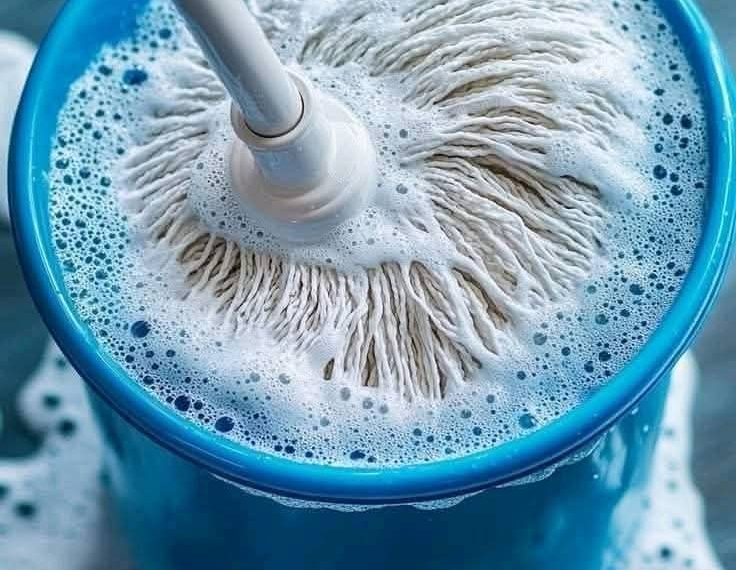Why Vinegar is Your Ultimate Cleaning Solution for Mops and Buckets
There’s something oddly satisfying about a clean mop swirling in a bucket of fresh, soapy water. That vibrant blue bucket with its frothy cleaning solution might just be the unsung hero of household maintenance. But what many don’t realize is that the very tools we use to clean our homes need regular cleaning themselves – and vinegar might be the secret weapon you’ve been overlooking.
The Hidden Problem with Cleaning Tools
Your mop and bucket work hard to keep your floors spotless, but in the process, they collect dirt, bacteria, and mildew. That string mop you see in the image is particularly prone to harboring unwanted guests in its absorbent fibers. Without proper cleaning, you might actually be spreading more germs than you’re eliminating each time you mop.
Vinegar: Nature’s Disinfectant for Cleaning Tools
Vinegar has been used as a cleaning agent for centuries, and for good reason. Its acidic nature makes it naturally antimicrobial and excellent at breaking down mineral deposits and soap scum. Here’s how to use it to revitalize your cleaning equipment:
For Your Mop Head:
- After each use, rinse your mop thoroughly with hot water to remove visible dirt
- Fill your bucket with equal parts hot water and white vinegar
- Submerge the mop head completely (just like in the image)
- Let it soak for 30 minutes to an hour
- Agitate occasionally by twisting the handle (creating that satisfying swirl effect)
- Rinse thoroughly with clean water
- Squeeze out excess moisture and hang to dry completely before storing
For Your Bucket:
Empty all water and rinse out visible debris
Fill halfway with hot water
Add 1-2 cups of white vinegar
Let sit for 30 minutes
Scrub any stained areas with a brush
Rinse thoroughly and dry completely before storing
Beyond Basic Cleaning: Maintenance Tips
Regular cleaning is important, but so is proper storage. Always store your mop with the head up or hanging to allow complete drying. A damp mop stored in a dark closet is a breeding ground for mold and bacteria.
Consider replacing string mops like the one pictured every 2-3 months if used frequently. For less frequent use, replace when the strings begin to discolor or develop an odor that persists after cleaning.
When to Replace vs. When to Deep Clean
While vinegar cleaning works wonders, sometimes replacement is necessary. Here are signs it’s time for a new mop:
Fraying or missing strings
Persistent odor even after cleaning
Visible mold or mildew that won’t wash out
Discoloration that doesn’t improve with cleaning
The Environmental Bonus
Using vinegar to clean your cleaning tools isn’t just effective – it’s environmentally friendly too. Unlike harsh chemical cleaners, vinegar is biodegradable and won’t introduce toxins into your home or waterways. It’s an inexpensive solution that works just as well as many commercial products.
Next time you finish mopping, take a moment to care for the tools that care for your home. A quick vinegar soak, like the one shown in that satisfying blue bucket, will ensure your floors are truly clean during your next mopping session. Your home (and your nose) will thank you for it.





